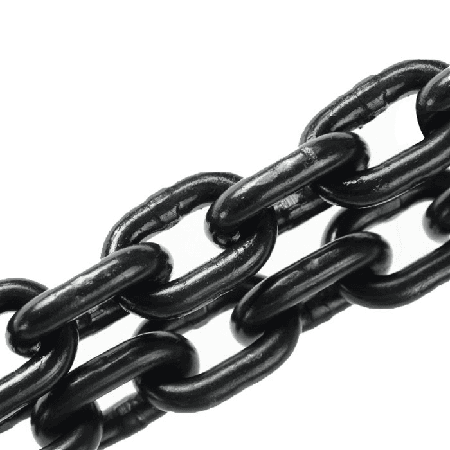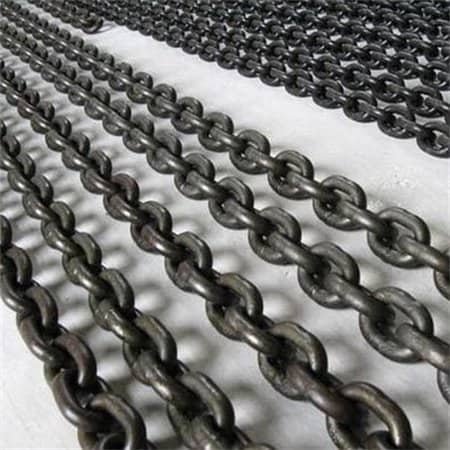The Difference between Chain Grades and How They’re Used?
- The Difference between Chain Grades and How They’re Used?
- Definition of Chain Grades
- Common Chain Grades and Their Characteristics
- Manufacturing Standards for Different Chain Grades
- How to Choose the Right Chain Grade?
- Chain Grades, Materials, and Surface Treatments
- Chain Grades and Safety Considerations
- Conclusion
In industries such as transportation, lifting, and secure fastening, the strength and quality of chains are crucial. Chain grades are an important standard for measuring the strength of chains, and different grades are suitable for various applications.
Definition of Chain Grades

Chain grades are used to measure the strength of chains, typically based on tensile strength and working load limit (WLL). Different chain grades have varying materials and heat treatment processes, affecting their load-bearing capacity and durability. Chain grades are usually denoted by “G” followed by a number, such as G30, G43, G70, G80, G100, and G120.
Common Chain Grades and Their Characteristics
| Chain Grade | Strength Level | Material & Treatment | Applications | Suitability for Lifting |
|---|---|---|---|---|
| G30 (Grade 30) | Low | Low-carbon steel | Agriculture, household use, decoration, light-duty towing | ❌ Not suitable |
| G43 (Grade 43) | Medium | Carbon steel, stronger than G30 | Marine, forestry, industrial applications, medium-strength towing | ❌ Not suitable |
| G70 (Grade 70) | High | Heat-treated carbon steel | Cargo securing, transportation, towing | ❌ Not suitable |
| G80 (Grade 80) | Very High | Alloy steel, complies with EN818 and ISO standards | Lifting, construction, mining, industrial use | ✅ Suitable |
| G100 (Grade 100) | Superior | Special alloy steel, 25% stronger than G80 | High-strength lifting, ports, heavy equipment handling | ✅ Suitable |
| G120 (Grade 120) | Ultra-High | Special alloy steel, 20% stronger than G100 | Extreme working conditions, high-altitude lifting, large-scale equipment handling | ✅ Suitable |
Manufacturing Standards for Different Chain Grades
- EN818-2: European standard for lifting chains.
- ASTM A391: Applicable to G80 and higher-grade chains.
- NACM Standards: Standards set by the National Association of Chain Manufacturers (NACM) in the U.S.
How to Choose the Right Chain Grade?
Choosing the right chain grade depends on the application:
- Lifting operations → Choose G80, G100, or G120.
- Cargo securing and transportation → Choose G70.
- Agricultural or light-duty use → Choose G30 or G43.
Additionally, always consider the working load limit (WLL) and breaking strength to ensure the chain meets operational requirements.
Chain Grades, Materials, and Surface Treatments
- Materials: High-strength chains are typically made from alloy steel or high-carbon steel.
- Surface Treatments:
- Galvanized: Improves corrosion resistance and is suitable for outdoor and marine environments.
- Electrophoresis Coating: Enhances wear resistance, ideal for industrial applications.
- Powder Coating: Improves aesthetics and protection.
Chain Grades and Safety Considerations
- Regular inspections: Replace chains with signs of wear, cracks, or deformation.
- Avoid overloading: Each chain grade has a specific load capacity.
- Proper storage: Store chains in a dry environment to prevent rust and corrosion.
Conclusion
Chain grades directly impact their strength and applications. Choosing the right chain not only improves efficiency but also ensures safety. Understanding the characteristics, standards, and safety considerations of different grades will help businesses and individuals make the best selection for their operational needs.


